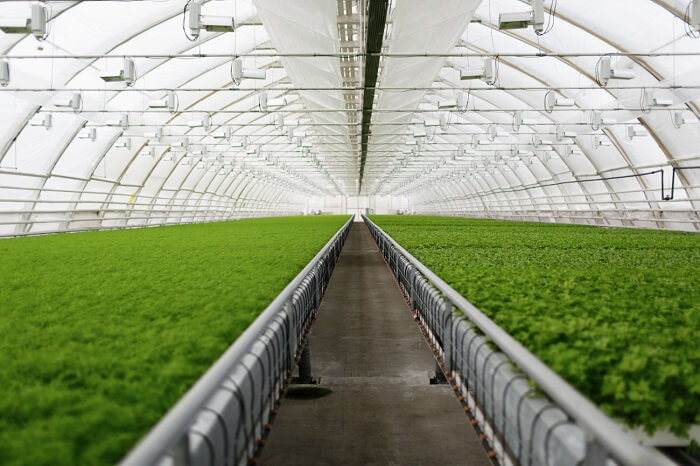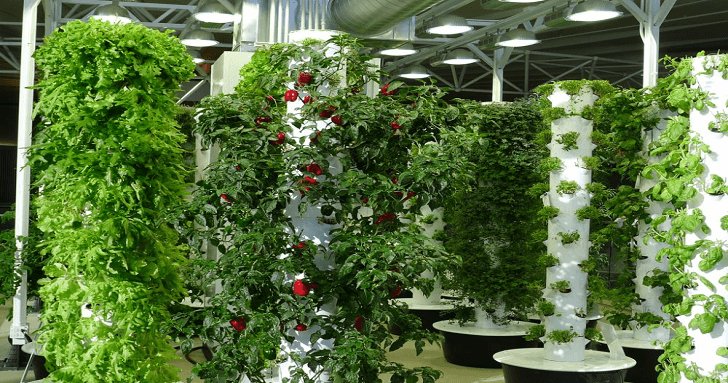Every stretch of land is not habitable. Some of the best stretches of landscapes in the world are devoid of vegetation. Harsh climatic conditions like extreme heat and cold prevent plants from thriving.
A chosen few plants that defy nature’s paradoxical curse, are either inedible or not sufficient for a tribe to survive. Transportation of food grown in fertile plains and other richer environments to barren spaces is costly and time-consuming, which makes it practically impossible to supply fresh food everywhere.
The solution to this problem appears in the form of greenhouse heating systems. Plants in greenhouses are protected from the wind, snow, rain, and other elements that can set back their growth. With these facilities, a microclimate can be created which is unlike the regional climate. In hot regions, plants that do well in cool temperatures like apples and strawberries can be grown in climate-controlled greenhouses. Cold regions can now enjoy fresh citrus fruit grown in automated green spaces.
Growing food in optimum conditions has become a challenge with climate change and global warming contributing to extreme changes that hitherto never existed. Farmers are confused and simultaneously grappling with crop losses which can be attributed to unprecedented rains, snow, or heat waves.
We have one planet to save that does not come with a plan B solution. Growing food with heavy doses of pesticides and fertilizers is only going to add the pressure that is already screeching at high speed and needs to press its brakes.
If as consumers of food, governing bodies, nations, farmers, and earth dwellers, we don’t do something now, then this disaster will be on us. And we cannot blame the predecessors. Adapting our agricultural practices to more progressive and ecological solutions can tide over the problem of increasing carbon footprint when trying to feed a population. One way to tackle this issue is through automated greenhouses which act as a paradigm shift in our agricultural practices.
Efficiency of Greenhouses
Whenever we talk about technical upgradation the cost involved is the first aspect that strikes us. Practically the results should be compared with the overall initial costs and check the feasibility of opting for one if the scales favor the advantages in the long run. Here are some advantages that you cannot ignore:
Farm Operations Are Smooth
Farm life is never easy, and a day in the life of farm occupants cannot be predicted. Even if the farm is focused upon a single core activity like only growing instead of having animals in the barn, there is a lot to be done during the daybreak. One has to rise with the sun and end their day at dusk. Not anymore.
Farm operations are a breeze with automation as manual labor-intensive tasks like tilling, sowing, watering, feeding the plants, pest management, and harvesting are automated. The number of people required reduces considerably to operate large tracts of land.
Quality Improvement
Automation of greenhouses makes it possible to maintain ideal growth conditions throughout the plant cycle. This practically means that a farmer can rotate more crops per year and get better returns for the crop yields in the market for maintaining consistent quality. The cherry tomatoes are the perfect size and juicy enough to go into your favorite salad with crunchy lettuce leaves when a local farmer starts growing vegetables in an automated greenhouse.
Heated Greenhouses For Optimum Efficiency

Using greenhouses to extend the growing season becomes more functional when its efficiency to harness the natural heat is improved. A farmer can grow more variety of plants when the seasons are induced through heat traps. When the temperature is turning cold there is no reason to overwinter the plants in a greenhouse as they are thriving in a zone that will take care of their optimum climate.
Despite everything, there are methods to improve the heating system through systematic planning. Here’s a comprehensive guide to heating your greenhouse effectively, along with some bonus tips to maximize its functionality.
Plant Locations
A commercial greenhouse spread across an acreage may have direct sunlight without blockages. But it is a given that depending on the geographical location, the north side receives less, and the south gets more sunlight. So it is ideal to plant sun loving plants in a south south-facing direction. Some plants need greenhouse pampering but need less sunlight in comparison to others. These are best suited to the middle and north end of the facility.
Thermal Insulation
Insulation with thermal curtains, walls, and roof material can increase the heat intensity. These curtains absorb the sunlight and radiate back the heat to keep the unit warm at night. Polycarbonate panels are used for their durability and insulating properties. Heat vents are used to release trapped air in case it gets too warm to handle.
Heating Systems
Electric and gas-based heaters can radiate hot air and increase the humidity in places where the temperature drops to freezing levels. While electric heaters are powered through energy sources, gas-based heaters need proper vents to let out the carbon monoxide levels that can be fatal to people working inside a facility. There are other options like steam heaters and geothermal heaters. However, these two are more complex and come with an extra cost.
Conclusion
We are what we eat. Gut sciences are becoming more relevant as people learn the importance of eating right by preferring fresh cooked meals over frozen and heavily processed foods. Farmers have a future ahead of them like never before if they seize the opportunity and take time to upskill their age-old practices with new innovative tech-based solutions.
Food grown locally is preferred which means the average farmer need not even work hard in transporting their food. What they need to consider is learning commercial greenhouse farming. It is not too hard but without learning the basics everything seems fuzzy. So it is logical to get started by learning through reading, visiting larger facilities in similar zones to see how profitable and viable these options are, and hiring a consultant before they venture into a greenhouse.

